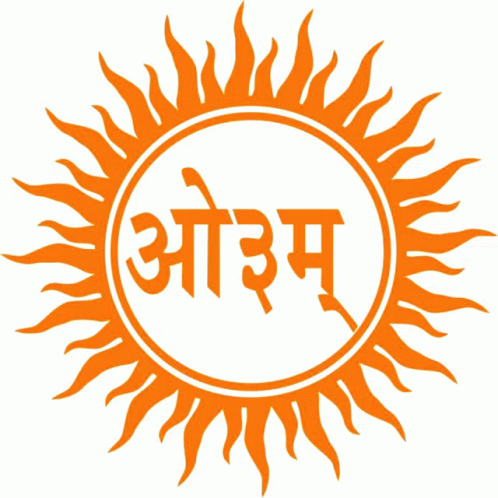Kathopanishad
- Ramesh Gupta
- Feb 10, 2022
- 4 min read
This upanishad essentially explains the essence of Soul and God. One could take two different paths in life, the simple one which looks attractive(the preya marg) and is a dead end and leads to unhappiness and the other one is a difficult one(the shreya marg), the proper one which leads to lasting peace, happiness and salvation. As is common to all upanishads, which are the teachings based on vedic knowledge imparted by different sages and generally go by their indivudual names, knowledge in this upanishad has been given by sage Kath in a story and dialogue form. Whether the stories are factual or meant just for educating and instructing the humanity at large to take the right path in life does not matter.

The whole Kathopanishad has been divided in to 6 chapters. For the sake of simplification, I will go over the essence of entire upanishad as one topic.
The story goes that there was a rich person named Uddalak(son of sage Arun also named Vajshrava). He desired moksha(emancipation) and started donating all of his wealth. A point came when the cows which were being donated were really worthless. His son, who was a strong devotee of God and realistic, asked his father thrice “I am also your possession to whom will I be given as a donation. Father got angry and told him that he will be given to Yama-the god of death.
Nachiketa went to sage yama and waited there for 3 days and 3 nights until the return of the sage, from where ever he was. As a result of three days of fasting and meditating, the nachiketa he become even more pure and that pleased Sage Yama, He blessed nachiketa with 3 boons.
My father not be upset with me
How to achieve salvation or “swarg lok”. He asked about the fire(yajyagni) by which salvation could be achieved. Yama explained that the ourside havan fire was only symbolic. Real fire is with in us.
We often say that I have fire in me to to achieve something. Examples are fire in the heart of great leaders, reformers etc who are adorable to us such as gandhi, swami dayanand ji, maharana pratap etc. Yama taked about the 4 ashrams or stages in life and the three sandhi or joints or connections of going from one ashram of life to the next one. One who passes through these ashrams while judiciously performing his/her duties will achieve salvation or lasting peace.
In first ashram called brahamcharyashram, a stage of salibacy one’s field in limited, which expands in next stages progressively.
What pappens after death. Is there a life after death? In essence, the secret about Soul and God. Yama said that this was a very tough question which has been pondered by all learned people and sages. Yama lured Nachiketa in every possible way from weath to all other materialistic possesions but the young boy did not move from his firm determination to know the facts. Two roads, the preya ( path of worldly pleasures) and shreya marg (renounciation and salvation) were described by yama. Nachiketa said that his determination had only become more firm by what ever was said by sage yama. He said that he could not live even one split second more than what yama would want.
Phrase “ Na Vitten Tarpaniya Manushya” is vey true. History is witness that money or materialistic possessions go only so far in giving us satisfation and don’t result in lasting happiness. Yama praised nachiketa for his firm resolve and ressisting the lure of materialism. Yama told him that he has found an able student who could be given this knowledge.
Yama finally went on to explain the secrect about life after death and about the creator and sustainer of this universe. Yama made it clear to nachiketa that the body is mortal or anitya. Since nitya or lasting can not be achieved by anitya or the one who is non lasting, body needs another force or entity to exist. Yama then goes in to the cause and effect relationship to explain the creation and creator concept, that is God and soul.
Here are some shlokas in this upanishad that express this concept.
“Sarve veda yatpadmamananti, tapaanshi sarvaani cha yadvadanti
Yadichhanto brahamcharyam charanti, tatte padam sangrahen brabeemyomittyetat.”
“na jayate mriyate va vipashchit naayam kutashchit na babhuva kashchit.
Ajo nityah shaashvatoayam puranah na hanyate hanyamane sharire”
“ Anoraniyan mahato maheeyanatmasya jantornihito guhayam
Tamakratu pashyati Veetshiko dhatu prasadanmahimanmatmanah”
Then yama explains the concept of three eternal entities based on the famous chariot, the passanger or the master and charioteer concept. Yama clealy proclaims that only the one who know and believe that there is only one God can achieve salvation. Rest are devata, who have divine qualities and give us something or the other in life, like mother, father, teacher and the guest as the living devata.
Soul residing in a pure body is called Hansa(swan), residing in space it is called vasu, sitting at the alter of sacrifice it is called hota(sacrificer) and sitting in a body it is called an atithi or a guest since it does not stick to one body but goes through different wombs. Air we breathe in is called prana vayu and what we exhale is called the apaana vayu.
Some souls take birth as humans and other as the other organisms in animal and plant kingdom.
The supreme soul or God pervades all beings, controls the whole world and makes the primitive (minutest) matter tak many shapes. It is only the wise who see him inside their own soulds can attain eternal happiness.He the supreme soul, can not be seen by the rays of the sun or by light of the moon or the stars or by electricily or by this visible fire. It is only through God’s shine that everthing shines.
_edited_edited_edited_edited_edited_edited_edited_edited.png)




Comments